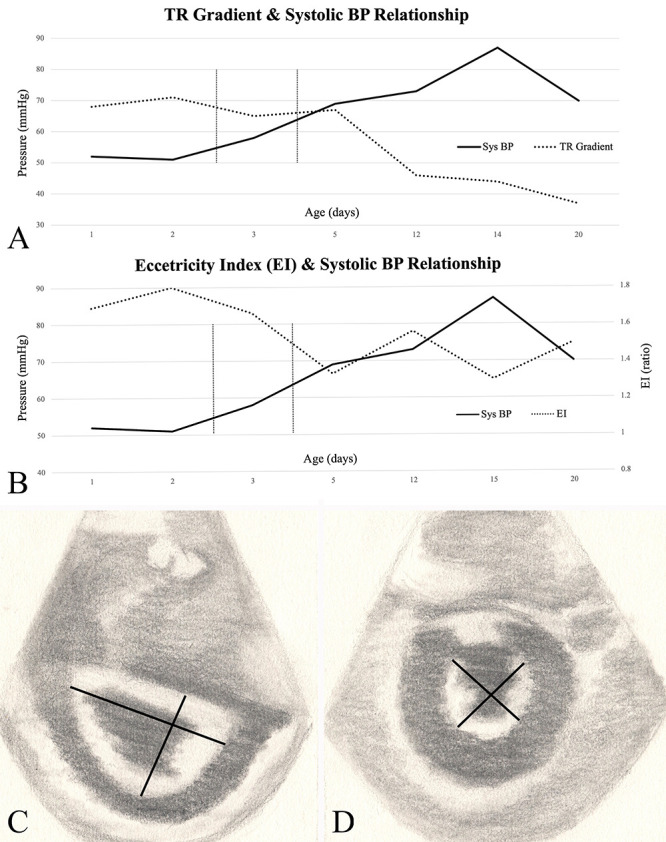FIG. 2.

A: Correlation of PAP (estimated as the TR gradient) with systemic arterial pressure for the first 3 weeks of life in baby boy with a VoGM. At baseline, there is notable suprasystemic PH (i.e., the PAP exceeds the systolic pressure). Suprasystemic PH indicates a grave prognosis and the need for emergency intervention. After 2 days of transarterial embolization, the relationship between pulmonary and systemic arterial pressure is reversed. The pulmonary arterial hypertension is no longer suprasystemic, which suggests that further embolization may be postponed until the 5th or 6th month of age. B: Correlation of systemic blood pressure with the EI during the first 3 weeks of life corresponding to the timeline in panel A. An EI > 1.6 was associated with the need for urgent embolization. Note that the EI does not correlate as well as the TR gradient. Thus, if available, the TR gradient is the primary indicator of the need for intervention, and EI is a secondary indicator. An artist’s depiction of the cardiac echo at end-systole demonstrates a normal left ventricle (C) versus a compromised left ventricle secondary to severe PH (D). Note the flattening of the interventricular septum (D) causing an increased EI. The index is calculated as the ratio of the left ventricle anteroposterior to the septolateral dimension (solid black lines).
